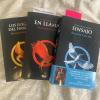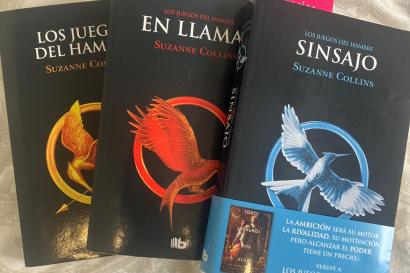One of my favorite things about my semester in Madrid has been the IES Abroad sponsored field trips.
Two days after we arrived in Spain, for instance, we were taken on a tour of Segovia, whose castle famously inspired Disney’s. We saw millenniums-old churches and palaces, and were served a delicious Spanish lunch to introduce us to the national cuisine. A few weeks later, we were off to Cáceres for two nights in the east of Spain, seeing ruins of Roman amphitheaters and houses and aqueducts with storks soaring overhead. I’ve also been to Cuenca with its hanging houses and Toledo with its infamous cathedral with IES Abroad, and I’ve learned more from these trips than almost any class. Yesterday, I went on one of my favorite trips: to a little city on the outskirts of Madrid called Aranjuez (Uh – RAWN – hweth).
The IES Abroad trips are incredibly convenient: they identify local sites of interest, charter the bus, buy the tickets, set the itineraries, and provide the professional guides to show you around. For our program, we get tours in Spanish with guides who are eager to help us improve our target-language listening skills; they’re helpful and understanding and so knowledgeable about everywhere we’ve been!
Our trip to Aranjuez was on the relaxed side – luckily, in my opinion, since we’d just finished our last full week of classes, stuffed with projects and presentations and papers. After sleeping in and a morning run, I met my classmates at the bus station at 11 a.m., where a bus was waiting to drive us. Aranjuez is about 45 minutes outside of the city proper and still within the Community of Madrid. It’s known for being a real sitio, or a royal site – that’s a place where the royal family had a residence that they would travel between depending on the climate and their preferences. Aranjuez was typically the springtime palace of the king, between a winter spent in Madrid, an escape to Segovia in the summer when the suffocating heat of Madrid became unbearable, and an autumn at El Escorial to mark All Saints’ Day in the burial place of all the kings of Spain.
After a brief introduction to the history of the city, our guide took us through a stroll of one of Aranjuez’s many, many gardens – this one the Jardin del principe, or the Garden of the Prince. It was named by Carlos III after his son, who would become Carlos IV, and is a mix of the English and French gardening styles. (Do you know what that means? I didn’t, until our guide taught me yesterday! French gardens are carefully cultivated to show man’s domination over nature, while English gardens are more wild and less controlled.)
Our walk ended on the other side of the garden in the Museo de Faluas Reales. Faluas are a type of royal boat used by the sovereigns to enjoy the rivers that crisscross the Iberian peninsula, and the museum houses several of these boats from hundreds of years ago. Our guide helpfully pointed out the smallest details: the painting of seals of individual regions from around the country on Carlos III’s boat, the gold plating on Isabel II’s, the different shape of faluas versus gondolas versus canoes. She also told us about the history of trade and sport-fishing on the river and taught us some Spanish vocabulary (oars, for instance, are remos).
Then, after some free time for lunch (pro tip: you’ll often have to pay for food, or you can pack a sandwich like I did to save money), we went to the real gem of Aranjuez: the royal palace. Originally constructed by Felipe II and expanded by his successors, the complex is massive. It’s also uncannily similar to the royal palace in Madrid, with the same colors and styles of curtains. The throne room in particular is almost a direct copy, helping maintain the continuity of the monarch’s power even as they physically move around the country.
Throughout the palace, our guide pointed out fascinating details: the “painting” that was actually an intricate mosaic, for instance, or the painted ceiling meant to evoke the Alhambra in Granada. Before we left, she took us to a back room to show us a little museum that displayed the current and former queens’ wedding dresses. After a quick conversation about the transition to monarchy after the end of the dictatorship with Franco’s death – a conversation I was glad to have, since many Spanish people still shy away from taking about the civil war or the fifty years of fascism – she gave us a few minutes to explore the gift shop and then shepherded us back to the bus.
It was a successful day in Aranjuez – and one much better and easier than I’d have managed on my own. Without IES Abroad’s planning and supervision, we would have had to research public transit and perhaps pay for a bus ticket, research museums on our own, pay for our own tickets, and figure out the layout of the city. I’m also sure I would’ve understood a lot less; even the difference between French and English gardens that our guide taught us, for instance, drastically changed the way I looked at the landscape. I wouldn’t have understood much of it without a tour guide.
Taking advantage of IES Abroad field trips has taught me so much about Spain; it’s also guided me geographically and historically through the culture, all for free (well, included in pre-paid tuition!). My advice: when you’re offered a chance to go on the field trips, jump at it. Who knows what you might learn?

Maple Buescher
Hi!! My name is Maple and I'm a junior at Bates College, where I am a member of the sailing team, the orchestra, and everything in between. I am the Editor in Chief of our student newspaper and am interested in pursuing a journalism career.





